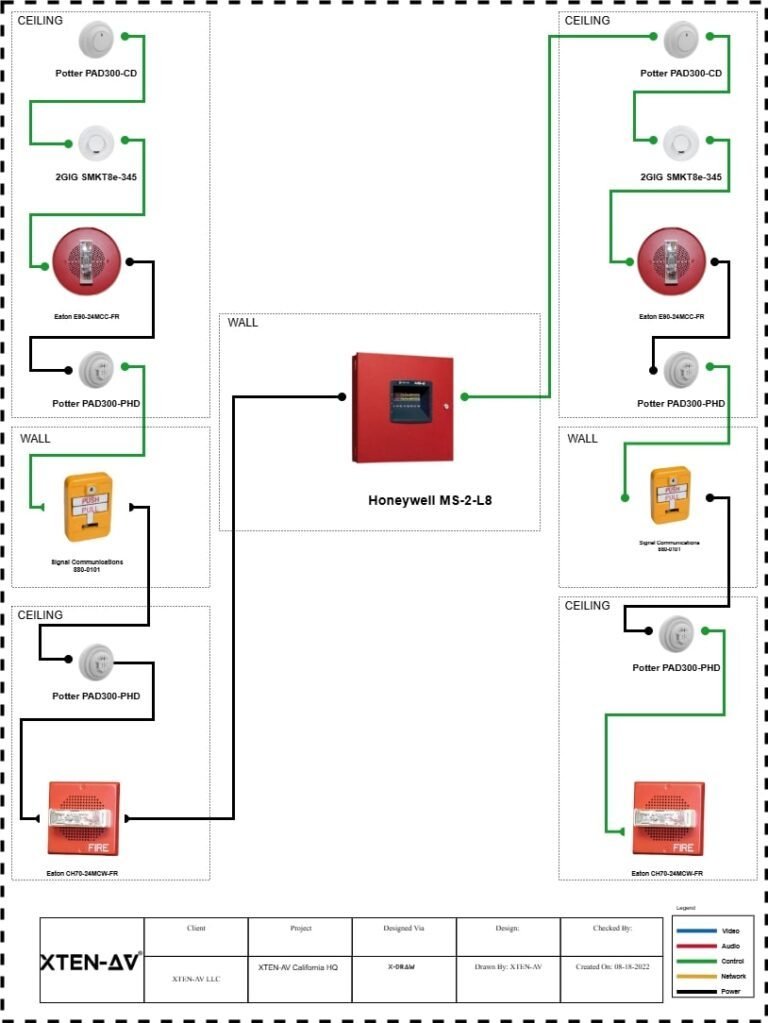In the digital era, cyber threats have evolved beyond simple malware or phishing. Attackers are now smarter, stealthier, and highly persistent. Businesses can no longer rely solely on traditional defenses like firewalls or antivirus software. Instead, they must think like the attacker — and that’s exactly where Black Box Penetration Testing comes into play.
This form of testing mimics real-world cyberattacks, providing organizations with a clear understanding of how external could breach their systems. It’s the ultimate simulation of a live attack scenario without causing real damage.
A reputed cyber security services company, such as Auditify Security, provides penetration testing services that go beyond vulnerability scanning — focusing on how resilient your systems truly are under realistic attack conditions.
What Is Black Box Penetration Testing?
Black Box Penetration Testing is a security assessment method where ethical test systems from an external attacker’s perspective, without any prior knowledge of internal architecture, source code, or system configurations.
In simpler terms, the tester knows as little as a real would — only the target’s publicly available information. This method is designed to simulate how actual attackers infiltrate networks, exploit vulnerabilities, and compromise data.
Purpose of Black Box Testing
The main objective is to evaluate:
- How effectively security controls prevent unauthorized access.
- The organization’s ability to detect, respond, and recover from attacks.
- The impact of a successful breach on business operations and data confidentiality.
By revealing weaknesses in perimeter defenses, black box testing helps businesses fortify their digital infrastructure against real cyber threats.
Why Black Box Testing Matters
Modern cybercriminals don’t have insider knowledge. They rely on reconnaissance, scanning, exploitation, and persistence techniques to compromise targets. Black Box Penetration Testing mirrors that process, allowing organizations to:
- Understand how external attackers operate.
- Identify security gaps unknown to internal teams.
- Test intrusion detection and response capabilities.
- Assess the overall strength of endpoint and network defenses.
It’s the most realistic measure of security readiness — where the tester behaves like an adversary, using creativity, persistence, and experience to breach defenses.
Black Box Testing vs White Box Testing
To understand the unique strengths of black box testing, let’s compare it with white box penetration testing:
Aspect | Black Box Penetration Testing | White Box Penetration Testing |
Tester Knowledge | No internal knowledge | Full access to system details |
Objective | Simulate external attacks | Deep internal security assessment |
Testing Depth | Surface-level (external) | Code-level and architecture-based |
Realism | Highly realistic simulation | Ideal for in-depth analysis |
Ideal For | Network perimeter, web apps, APIs | Source code, configuration, and logic testing |
A comprehensive cyber security strategy often integrates both methods — black box for real-world simulation and white box for internal security assurance.
How Black Box Penetration Testing Works
A professional penetration testing service follows a systematic, ethical approach to simulate realistic attacks. Below are the typical stages:
1. Reconnaissance (Information Gathering)
The tester collects publicly available data about the target:
- Domain names
- IP addresses
- Open ports and services
- Employee details (social engineering vectors)
2. Scanning & Enumeration
Using tools like Nmap, Burp Suite, and Nessus, the tester maps the attack surface — identifying potential entry points.
3. Exploitation
Here, the tester attempts to exploit identified vulnerabilities such as:
- SQL Injection
- Cross-Site Scripting (XSS)
- Broken Authentication
- Remote Code Execution (RCE)
- Misconfigured APIs
4. Privilege Escalation
Once inside, the tries to elevate privileges to gain deeper access — just like a real intruder.
5. Post-Exploitation & Persistence
The focus shifts to data extraction, establishing backdoors, and testing detection mechanisms.
6. Reporting
A detailed report is prepared containing:
- Discovered vulnerabilities
- Exploitation details
- Risk ratings
- Mitigation recommendations
This final step allows businesses to strengthen their defenses effectively.
Key Objectives of Black Box Testing
- Evaluate External Security Posture
Determines how exposed the organization is to real-world threats. - Simulate Real Attacker Behavior
Understand how adversaries exploit gaps in web apps, APIs, and networks. - Validate Security Controls
Tests firewalls, IDS/IPS, WAF, and authentication systems under attack conditions. - Enhance Incident Response Readiness
Reveals how quickly teams can detect, contain, and mitigate attacks. - Support Compliance Requirements
Helps satisfy testing requirements for ISO 27001, PCI DSS, SOC 2, HIPAA, and GDPR.
Benefits of Black Box Penetration Testing
- Realistic Attack Simulation – Provides insight into how actual might target your business.
- No Prejudice or Bias – Since the tester has no prior knowledge, results are unbiased.
- Validates Security Controls – Tests the efficiency of endpoint protection, firewalls, and monitoring tools.
- Regulatory Compliance – Fulfills testing mandates under PCI Security Compliance, SOC 2 Compliance Standards, and ISO 27001 Information Security frameworks.
- Enhanced Customer Trust – Demonstrates your commitment to security and privacy.
- Early Threat Detection – Identifies unknown vulnerabilities before cybercriminals can exploit them.
Types of Black Box Penetration Testing
1. External Network Penetration Testing
Simulates attacks from the internet to test how secure your public-facing infrastructure (servers, DNS, mail systems) is.
2. Web Application Penetration Testing Service
Tests web apps for common vulnerabilities such as injection flaws, cross-site scripting, and insecure authentication.
3. Mobile Application Penetration Testing Services
Assesses mobile apps for insecure APIs, weak encryption, and data leaks.
4. IoT Device Penetration Testing
Examines smart devices, firmware, and cloud connectivity for security flaws.
5. Wireless Network Testing
Evaluates the security of Wi-Fi networks, encryption protocols, and access points.
6. Cloud Infrastructure Testing
Part of cloud based cyber security solutions, this ensures that cloud storage, containers, and access policies are secure.
7. Social Engineering Testing
Tests employees’ awareness using phishing or pretexting simulations to gauge human factor risks.
Industries That Rely on Black Box Testing
- Finance & Banking: To ensure PCI DSS compliance and secure customer transactions.
- Healthcare: For HIPAA compliance services and protection of sensitive health data.
- E-Commerce: Safeguards online payment systems and customer data.
- IT & SaaS: Ensures secure APIs and web application frameworks.
- Manufacturing & IoT: Validates the integrity of connected devices through IoT device penetration testing.
- Cloud Providers: Uses cloud based cyber security solutions to protect user data and system reliability.
How Black Box Testing Helps with Compliance
Cybersecurity regulations mandate regular penetration testing. Black box testing directly supports:
- ISO 27001 Information Security: Validates risk controls and external threat mitigation.
- PCI Security Compliance: Ensures secure payment processing environments.
- HIPAA Compliance Services: Safeguards patient records and PHI.
- GDPR Compliance Services: Protects personal data under EU regulations.
- SOC 2 Type 1 & Type 2 Compliance: Demonstrates the effectiveness of controls over data security and privacy.
Regular black box testing not only strengthens defense mechanisms but also ensures that organizations stay compliant with global standards.
Integration with Other Cybersecurity Services
Auditify Security combines Black Box Testing with a suite of advanced cybersecurity and compliance solutions:
1. White Box Penetration Testing
For code-level visibility and logic flaw detection.
2. Web Application Security Testing
Ensures your web apps are resilient against common exploits and zero-day threats.
3. Mobile Application Security Testing
Analyzes app security for both Android and iOS platforms.
4. Source Code Review & Audit Services
Detects vulnerabilities within the code base, enhancing software integrity.
5. Thick Client Penetration Testing Services
Assesses hybrid desktop applications for authentication and encryption flaws.
6. Red Teaming Services
A step beyond penetration testing — simulates persistent, multi-vector attacks to test your organization’s detection and response readiness.
7. Virtual CISO Services
Provides strategic cybersecurity leadership and governance tailored to your business environment.
These integrated services form a complete ecosystem of cyber defense and compliance.
Black Box Testing Methodologies and Tools
Common Tools Used:
- Nmap – Network discovery and port scanning
- Burp Suite – Web app vulnerability testing
- Metasploit – Exploitation framework
- Nessus / OpenVAS – Vulnerability scanning
- Hydra / John the Ripper – Password cracking
- Wireshark – Traffic monitoring and packet analysis
Testing Methodologies Followed:
- OWASP (Open Web Application Security Project)
- NIST SP 800-115 Guidelines
- PTES (Penetration Testing Execution Standard)
- OSSTMM (Open Source Security Testing Methodology Manual)
Steps Involved in a Black Box Penetration Test by Auditify Security
- Scoping and Planning: Define test objectives, targets, and timelines.
- Reconnaissance: Identify domains, subdomains, and external IPs.
- Vulnerability Mapping: Detect potential weaknesses.
- Exploitation: Attempt to gain unauthorized access.
- Post-Exploitation: Assess impact and persistence.
- Reporting: Provide detailed findings and recommendations.
- Remediation Support: Assist in patching vulnerabilities.
- Retesting: Verify fixes to ensure complete mitigation.
This structured, ethical process ensures full control and zero disruption to business operations.
Real-World Example: How Black Box Testing Prevents Breaches
Consider a financial organization that stores sensitive payment data. Through black box penetration testing, testers discovered a misconfigured web server allowing directory traversal — a flaw that could have led to data exfiltration.
By addressing this, the company not only averted a potential breach but also improved PCI Security Compliance. This case demonstrates how proactive testing can prevent real-world damage and financial loss.
Black Box Testing in Cloud Environments
With the shift toward digital transformation, organizations rely heavily on cloud ecosystems. Cloud based cyber security solutions combined with black box testing validate:
- Misconfigured storage buckets
- Insecure IAM policies
- Unpatched virtual machines
- Unrestricted APIs
This ensures cloud assets remain protected against external exploitation.
The Role of Black Box Testing in Red Teaming
Red Teaming Services take black box testing a step further. While penetration tests identify vulnerabilities, red teams simulate advanced persistent threats (APTs) to test overall organizational defense — including SOC response and threat intelligence accuracy.
Together, they offer a full-spectrum view of an organization’s resilience.
Challenges of Black Box Testing
- Limited Visibility: Lack of internal access may cause deeper flaws to go undetected.
- Time-Intensive: Requires extensive reconnaissance and manual effort.
- Detection Limitations: Focused primarily on external vulnerabilities.
However, when combined with white box penetration testing and source code review, it forms a comprehensive defense strategy.
Why Choose Auditify Security for Black Box Testing
✅ Certified Ethical (CEH) and OSCP Experts
✅ Proven Track Record Across Industries
✅ Compliance-Driven Testing Approach
✅ Detailed, Actionable Reports
✅ Integration with DevSecOps and Continuous Testing
At Auditify Security, we don’t just identify vulnerabilities — we help you eliminate them and prevent future attacks.
Conclusion: Think Like a , Defend Like a Pro
Black Box Penetration Testing is the most authentic way to assess your organization’s defense against real-world cyber threats. It simulates what an attacker would do, revealing weak points before they can be exploited.
By partnering with a trusted cyber security services company like Auditify Security, you gain visibility, control, and confidence in your digital security posture. Whether you’re aiming for ISO 27001 information security, SOC 2 compliance, or HIPAA and GDPR readiness — black box testing ensures your systems remain secure, compliant, and resilient.
FAQs: Black Box Penetration Testing
1. What is Black Box Penetration Testing?
It’s a method where ethical test systems externally without any internal access, simulating real-world cyberattacks.
2. How does it differ from White Box Testing?
In White Box Penetration Testing, testers have full system access, while in Black Box Testing, they start with zero knowledge.
3. What’s the main goal of Black Box Testing?
To simulate real attack scenarios and uncover vulnerabilities an outsider could exploit.
4. Which industries benefit most from this testing?
Finance, healthcare, e-commerce, cloud, and IoT industries rely heavily on black box testing.
5. Does it help with compliance?
Yes. It supports frameworks like ISO 27001, SOC 2, HIPAA, GDPR, and PCI DSS.
6. How often should it be done?
At least once or twice a year, or after major infrastructure changes.
7. Can Auditify Security perform both black box and white box testing?
Absolutely. Our experts offer end-to-end penetration testing services including red teaming, source code review, and virtual CISO services.





























































































































































































































































































































































































































































































